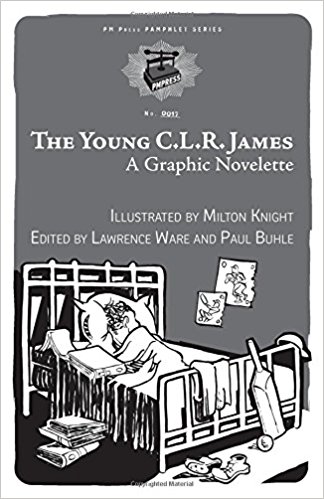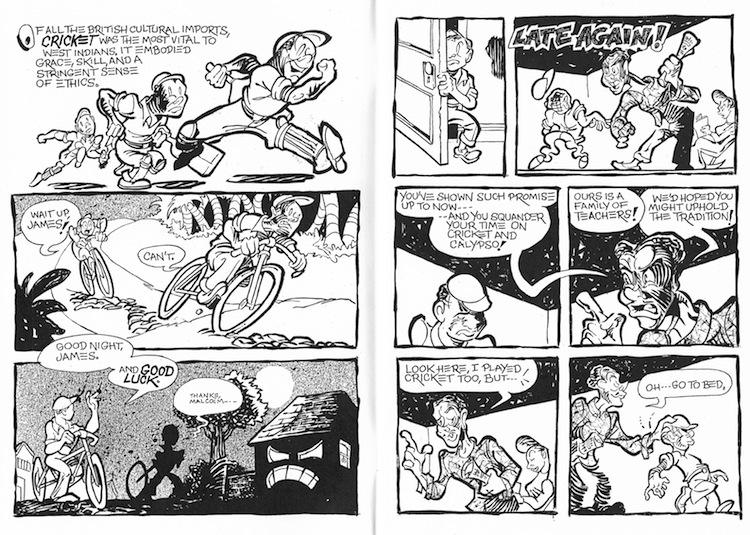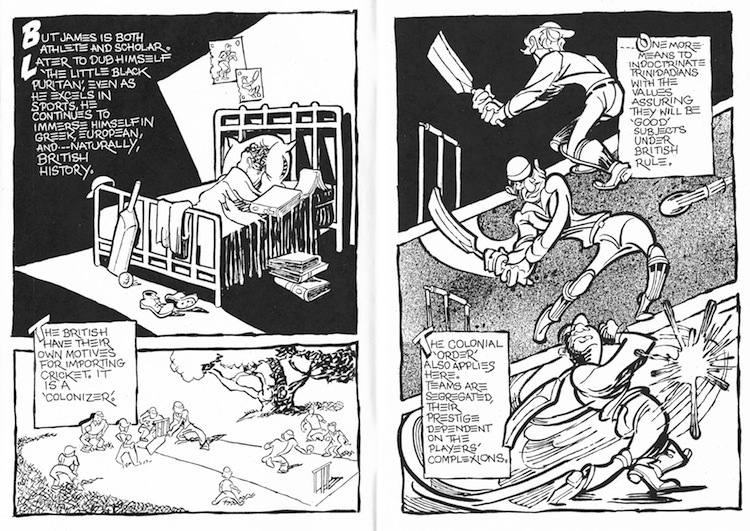I know nothing about cricket. My only sense of the game came from Frank Harris’s portrait of H.G. Wells. But now that I’ve read The Young C.L.R. James: A Graphic Novelette (PM Press Pamphlet), which traces the early development of the Pan-Africanist writer and Trotskyite revolutionary who was a cricket star as a young man in his native Trinidad, I’ve learned what the game meant in the British colonial scheme of things.
Weirdly, Harris might have been describing C.L.R. James when he wrote of Wells: “I found from a dozen indications that he was very touchy about his social position, anxious to be well up in the latest society slang, to dress and behave correctly. When I mentioned this to someone who knew Wells intimately, he replied: ‘Wells’s father, you know, was a professional cricketer, getting in the summer months perhaps $25 a week. He has come from the bottom and learnt all that society touches as a man … ‘C.L.R. James and H.G. Wells were nothing alike. They were not contemporaries and, although both were prolific authors in many different genres — journalism, political essays, history, social commentary, plays, and fiction — and although both had progressive views, they obviously came from different realms of the British empire and had very different takes on the world. But both of their fathers were professional cricket players. The game represented values they simultaneously cherished and rebelled against, so I might be forgiven for making the association.







